Topics
Category
Era
Timber Worker Strikes, 1937
Michigan strikers reading bulletin board at strike headquarters, Marenisco, Michigan, 1937. The Minnesota Timber Workers Union sent its organizers to coordinate the Michigan strike.
Eight years into the Great Depression, timber workers had had enough. Their work days were too long, their wages were too low, and their living conditions were squalid. They went on strike in January 1937 and again in October, and their peaceful organizing won union recognition, higher wages, better conditions, and a central role in regional and national timber worker movements.
Timber workers had attempted to organize before 1937, but their efforts at collective bargaining were unsuccessful. Large-scale logging in Minnesota began in the mid-nineteenth century, and workers tried to organize for better conditions almost immediately, beginning in 1858. But without union support, spontaneous strikes were ineffective.
For many decades, established unions like the American Federation of Labor (AFL) refused to organize timber workers. Men who worked in the logging industry were typically single and had to move from camp to camp as the logging industry's needs changed. Only the most militant labor organizations were willing to work with such men. The largest timber worker union drive before 1937 was led by the Industrial Workers of the World (IWW) in 1916 and 1917, but it was violently repressed.
As logging conditions worsened in the 1930s, labor agitation was sweeping the United States. In 1934, Teamster truckers led a major strike in Minneapolis, and Midwestern strikes among steel and auto workers followed in 1935 and 1937. In 1936, Minnesotans overwhelmingly elected the Farmer-Labor candidate, Elmer Benson, as governor.
The first timber strike was called on January 4, 1937, and 4,000 workers walked off the job. Logging companies were caught off guard, and the strikers had leverage. If they did not finish skidding logs along the icy roads before spring temperatures melted the ice, the logging companies would lose that season's harvest. The logging companies had to settle quickly.
The strike was settled peacefully by the end of January, and the timber workers won many of their demands. Timber producers officially recognized the union and promised eight-hour workdays, wages of $70 per month, and better living conditions.
Union leaders were not content to organize just the state's workers. In March, Timber Worker Union president Fred Lequier announced a regional strategy: in order to keep their gains, Minnesota timber workers would help to organize lumberjacks in Michigan, Wisconsin, and Canada.
In May, timber workers from Michigan went on strike, led by Minnesota organizers. But in Michigan, large logging companies with vast resources still dominated the timber industry. They were able to organize vigilante squads that violently attacked strikers, including Duluth labor lawyer Henry Paull, who was beaten severely and dumped in Wisconsin. The strikes were called off, and workers' demands were not met.
By the fall, attention turned back to Minnesota, where the January contract was ending. This time, the logging companies were prepared. In April, 85% of Minnesota logging companies had come together to form the Minnesota Timber Producers' Association (MTPA). The MTPA orchestrated a public relations campaign to damage the second major Minnesota strike. MTPA members tried to drive a wedge between poor farmers and poor timber workers in northern Minnesota.
Despite these efforts, many farmers wrote to Governor Benson to support the timber workers. In November, the governor came to Duluth to help with negotiations after a standoff between logging trucks and the union picket line blockaded Highways 45 and 61 near Duluth. A deal was reached on November 21, and timber workers were able to keep the gains they had made in January.
The union succeeded in creating solidarity between poor people in northern Minnesota, not only between farmers and timber workers but also across racial and ethnic lines. The union was first led by two American Indian men, Fred Lequier and Jim Rogers. Finnish Americans like Ilmar Koivunen and Martin Kuusisto later led the union, and Jewish Americans Sam Davis and Irene Paull founded the union's newspaper, The Timber Worker. The union kept a united front even after it left the AFL to join the competing Congress of Industrial Organizations (CIO).
Although the logging industry was on its last legs in 1937, the timber workers' union used the labor movement's momentum and the support of a Farmer-Labor governor to significantly improve working conditions during the industry's final years.
Bibliography
Beck, Bill. “Radicals in the Northwoods: The 1937 Timber Workers Strike.” Journal of the West 35, no.2 (April 1996): 55–63.
Engberg, George B. “Collective Bargaining in the Lumber Industry of the Upper Great Lakes States.” Agricultural History 24, no.4 (October 1950): 205–211
Mitchell, Stacy. “Union in the North Woods: The Timber Strikes of 1937.” Minnesota History 56, no.5 (Spring 1999): 262–277.
http://collections.mnhs.org/MNHistoryMagazine/articles/56/v56i05p262-277.pdf
Related Resources
Primary
“4,000 Lumber Jacks Go On Strike.” The Minneapolis Labor Review, January 15, 1937.
“Upper-Michigan Jacks Strike Spreading.” Timber Worker, May 21, 1937.
Paull, Irene. “Upper State Michigan in Grip Fascists.” The Minneapolis Labor Review, July 9, 1937.
“Lumberjacks are Picketing Local Highways.” Two Harbors Chronicle, November 4, 1937.
Timber Worker (Duluth, MN), 1937
Newspaper Collection (Microfilm), Minnesota Historical Society, St. Paul
Bulletin - Timber Producers Association, 1937–1956
Newspaper Collection, Minnesota Historical Society, St. Paul
Records of governors Floyd B. Olson, Hjalmar Petersen, and Elmer A. Benson, 1932–1938
State Archives, Minnesota Historical Society, St. Paul
http://www2.mnhs.org/library/findaids/gr00063.xml
Description: Correspondence with Governors Olson, Petersen, and Benson, organized by year then alphabetically by correspondent. In 1937, file P contains correspondence about a physical attack on Henry Paull, the attorney for the Timber Workers Union. Two 1937 files under “Timber strike” contain correspondence about the January and October strikes. Numerous other 1937 files contain correspondence related to the strikes.
Martin Kuusisto Oral History, 1968
Oral History Collection, Minnesota Historical Society, St. Paul
Description: Tapes and transcripts of Irene Paull’s interview with Martin Kuusisto in 1968. Kuusisto helped to organize the Timber Workers Union and served with the Lincoln Brigade in the Spanish Civil War. Most of the interview addresses the Timber Workers Union. Note that this is not found in the online catalog, only in the Oral History binders in the MHS Library.
Ilmar and Edith Koivunen Oral History, 1968
Oral History Collection, Minnesota Historical Society, St. Paul
Description: Tapes and transcripts of Irene Paull’s interview with Ilmar and Edith Koivunen in 1968. Ilmar Koivunen was an organizer and president of the Timber Workers Union and the interview addresses that union, the Great Depression, and Finnish radicalism. Note that this is not found in the online catalog, only in the Oral History binders in the MHS Library.
P1003
J.C. Campbell Company Records, 1887–1960
Manuscript Collections, Minnesota Historical, St. Paul
Description: Correspondence, contracts, wage and work records, and other documents for this northern Minnesota lumber company. Box 1 contains a January 29, 1937 labor agreement with the Timber Workers Union. J.C. Campbell was the first treasurer of the Timber Producers Association.
Secondary
Beck, Bill. “50 Years of MTPA History.” Bulletin – Timber Producers’ Association 42, no.3 (1987): 13–65.
Paull, Irene. “Why? I.W.A. C.I.O.” [Minnesota: I.W.A. Local 29, 1948].
———. We’re the People: Also Ballads by the Workers. Duluth: Midwest Labor, [1941?].
Web
MPR News. How Duluth Became a Union Town.
http://minnesota.publicradio.org/display/web/2006/11/14/laborhistory/
Related Images

Michigan strikers reading bulletin board at strike headquarters, Marenisco, Michigan.
Michigan strikers reading bulletin board at strike headquarters, Marenisco, Michigan, 1937. The Minnesota Timber Workers Union sent its organizers to coordinate the Michigan strike.
Holding Location
Articles
More Information
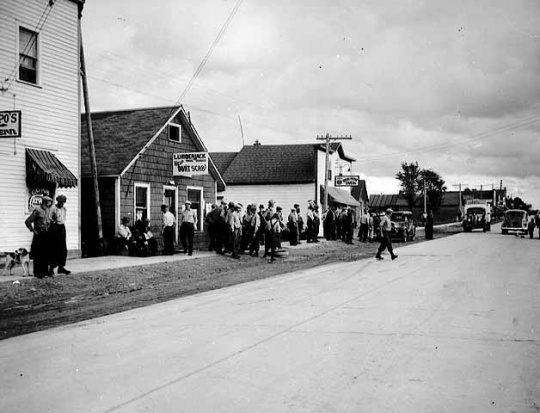
Striking lumberjacks standing near strike headquarters, Marenisco, Michigan.
Striking lumberjacks standing near strike headquarters, Marenisco, Michigan, 1937. The Minnesota Timber Workers Union sent its organizers to coordinate the Michigan strike.
Holding Location
Articles
More Information
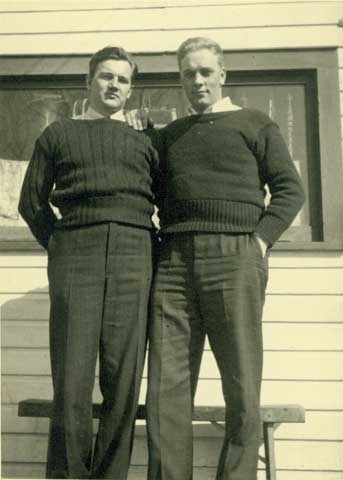
Ilmar Koivunen (right) with Ernest Tomberg.
Ilmar Koivunen (right) with Ernest Tomberg, 1938. Koivunen became president of the Timber Workers Union in 1937.
Holding Location
Articles
More Information
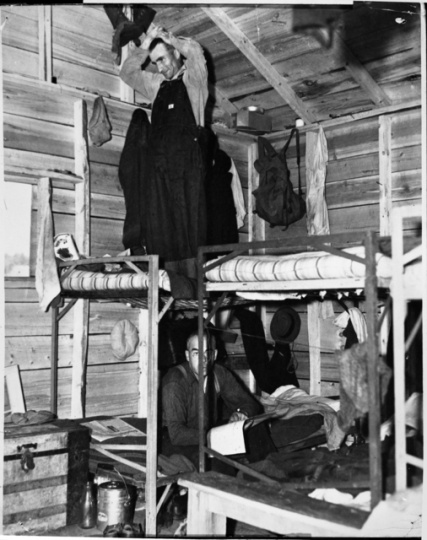
Timber workers during strike?
Timber workers, potentially during strike 1930–1939.
Holding Location
Articles
More Information
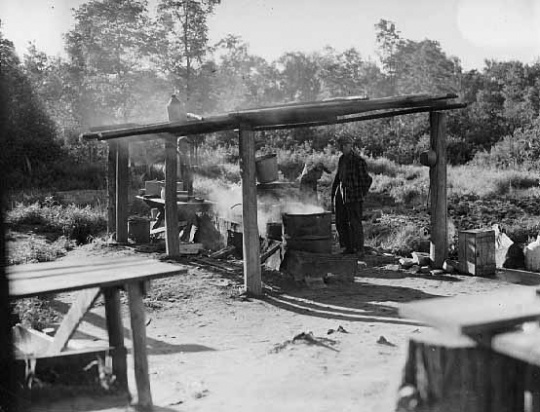
Timber workers during strike?
Timber workers, potentially during strike 1930–1939.
Holding Location
Articles
More Information
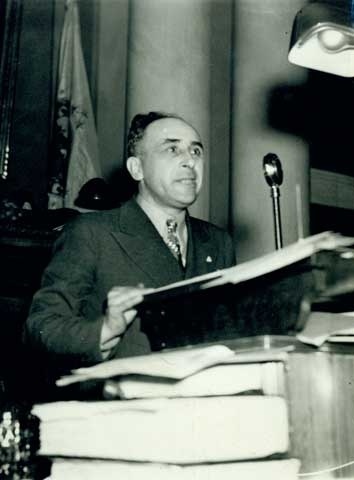
Fred LeQuier, President of the International Workers Association.
Fred LeQuier, President of the International Workers Association and organizer of the Timber Workers Union c.1930. LeQuier (also spelled Lequier) was the first president of the Timber Workers Union, when it was affiliated with the American Federation of Labor.
Holding Location
Articles
More Information
Related Articles
Turning Point
On January 4, 1937, the newly formed Minnesota Timber Workers Union calls a strike. Thousands of workers across Minnesota join the strike, and the union wins higher wages and better working conditions.
Chronology
1858
1896
1916
1937
Bibliography
Beck, Bill. “Radicals in the Northwoods: The 1937 Timber Workers Strike.” Journal of the West 35, no.2 (April 1996): 55–63.
Engberg, George B. “Collective Bargaining in the Lumber Industry of the Upper Great Lakes States.” Agricultural History 24, no.4 (October 1950): 205–211
Mitchell, Stacy. “Union in the North Woods: The Timber Strikes of 1937.” Minnesota History 56, no.5 (Spring 1999): 262–277.
http://collections.mnhs.org/MNHistoryMagazine/articles/56/v56i05p262-277.pdf
Related Resources
Primary
“4,000 Lumber Jacks Go On Strike.” The Minneapolis Labor Review, January 15, 1937.
“Upper-Michigan Jacks Strike Spreading.” Timber Worker, May 21, 1937.
Paull, Irene. “Upper State Michigan in Grip Fascists.” The Minneapolis Labor Review, July 9, 1937.
“Lumberjacks are Picketing Local Highways.” Two Harbors Chronicle, November 4, 1937.
Timber Worker (Duluth, MN), 1937
Newspaper Collection (Microfilm), Minnesota Historical Society, St. Paul
Bulletin - Timber Producers Association, 1937–1956
Newspaper Collection, Minnesota Historical Society, St. Paul
Records of governors Floyd B. Olson, Hjalmar Petersen, and Elmer A. Benson, 1932–1938
State Archives, Minnesota Historical Society, St. Paul
http://www2.mnhs.org/library/findaids/gr00063.xml
Description: Correspondence with Governors Olson, Petersen, and Benson, organized by year then alphabetically by correspondent. In 1937, file P contains correspondence about a physical attack on Henry Paull, the attorney for the Timber Workers Union. Two 1937 files under “Timber strike” contain correspondence about the January and October strikes. Numerous other 1937 files contain correspondence related to the strikes.
Martin Kuusisto Oral History, 1968
Oral History Collection, Minnesota Historical Society, St. Paul
Description: Tapes and transcripts of Irene Paull’s interview with Martin Kuusisto in 1968. Kuusisto helped to organize the Timber Workers Union and served with the Lincoln Brigade in the Spanish Civil War. Most of the interview addresses the Timber Workers Union. Note that this is not found in the online catalog, only in the Oral History binders in the MHS Library.
Ilmar and Edith Koivunen Oral History, 1968
Oral History Collection, Minnesota Historical Society, St. Paul
Description: Tapes and transcripts of Irene Paull’s interview with Ilmar and Edith Koivunen in 1968. Ilmar Koivunen was an organizer and president of the Timber Workers Union and the interview addresses that union, the Great Depression, and Finnish radicalism. Note that this is not found in the online catalog, only in the Oral History binders in the MHS Library.
P1003
J.C. Campbell Company Records, 1887–1960
Manuscript Collections, Minnesota Historical, St. Paul
Description: Correspondence, contracts, wage and work records, and other documents for this northern Minnesota lumber company. Box 1 contains a January 29, 1937 labor agreement with the Timber Workers Union. J.C. Campbell was the first treasurer of the Timber Producers Association.
Secondary
Beck, Bill. “50 Years of MTPA History.” Bulletin – Timber Producers’ Association 42, no.3 (1987): 13–65.
Paull, Irene. “Why? I.W.A. C.I.O.” [Minnesota: I.W.A. Local 29, 1948].
———. We’re the People: Also Ballads by the Workers. Duluth: Midwest Labor, [1941?].
Web
MPR News. How Duluth Became a Union Town.
http://minnesota.publicradio.org/display/web/2006/11/14/laborhistory/







